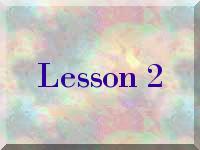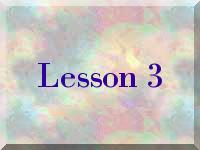Lesson 3

Instructional Objectives
In this lesson, the students will learn how to represent climate on their continent. They will begin by recreating a climate map from a book or atlas. They will apply this knowledge by using the same climate key to color the climates, as they predict them, on their own continent.

Time Required
One to Two Class Periods
Advanced Preparation/Prerequisite Knowledge/Skills/Materials Required
The students will need colored pencils and a copy of the a map which corresponds to one which they will copy from the US Climate Map Website, a book or atlas. Lead students into a discussion about weather. What is it? Are there any assumptions they can make about it? Lead them to some basic conclusions. It is hotter and more humid toward the equator and cooler as you go North or South. Higher elevations are usually cooler than low ones, and temperatures are more stable near the coast. Ask them to keep these thoughts in mind as they proceed to the lesson task.
Vocabulary

Assessment/Evaluation
The unit builds upon each lesson toward the successful completion of the "Continent Project." It is important that all students complete this lesson successfully. For accountability, the teacher may want to collect, check for understanding and return. The students will need these activity sheets as they will use them for reference while working on their continent projects.
Procedures/Activities
There are essentially two parts to this guided practice exercise. First, students should simply copy the climate patterns from website, book or atlas to their map handouts (USA Map). They can use colored pencils to fill in the climate colors. Second, the students should copy the map legend onto their map handouts. If there is no room on the front, use the back. I prefer to have the students paraphrase the legend into their own words as sometimes the text is a bit wordy. If a student chooses to be creative and change the climate colors, she should make sure to change the colors in the legend as well.

Homework
As a demonstration of their understanding of a few basic global climate patterns, students will lightly shade their own continents in the same way they did with the guided practice maps. They will also place a legend in the empty space next to their continents. Depending on your access to technology, students may wish to create their continent in the paint program of Printshop or any other program which has a paint component.

Web Resources for Lesson 3
This is a great place to download and print free outline maps
(This is a pay sight, but they offer a free trial, and registration is reasonable. This is a great resource for teachers who want accurate, detailed maps in a rapidly changing world.)
Extensions
If student are interested in learning more about weather patterns, you may encourage them to do some research about rain shadows which are one reason for the forming of many of the world's deserts. Another point of interest to students is the fact that deserts are not necessarily hot. The term desert refers to the amount of rainfall. In fact, much of the Alaskan Tundra is technically a desert.

PDF Files
• In order to access the worksheets and answer keys included in this site, you will need to have Acrobat Reader installed on your computer. If you do not have it, you may download it for free at the link to the right.